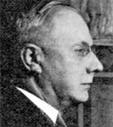|
BIOGRAPHY |
 |
||||||||||||
|---|---|---|---|---|---|---|---|---|---|---|---|---|---|
|
|
|
|
|
|
|
|
|
|
|
|
|
|
|
|
Louis
Lavoye |
Louis LAVOYE (Liège 1877 - Liège 1975) |
||||||||||||||||||||||||||||||||||||||||||||||||||||||||||||||||||||||||||||||||||||||||||||||||||||||||||||||
|
As
a virtuoso organist, he had been a student of
Charles-Marie Widor in Paris, he produced numerous
recitals in Belgium and abroad and he was the
titular organist at the "Saint-Jean
l'Evangéliste" Church where his Sunday
performances were attended always by an
appreciative audience. A
founding member of the Society for Musicology in
Liège in 1909, Louis Lavoye became its
president in 1945. Under his influence, the Society
became involved in a variety of subjects, from
plain-song to the dodecaphony theories. He was the
first to emphasize the intrinsic musical value of
Jean-Noël Hamal's Walloon operas. He undertook
- in collaboration with José Quitin for the
biographic part - the transcription of the motets
of 8 voices of Lambert Coolen as contained in the
Grand Chorale Book of Saint-Lambert (1645).
Repeatedly, he defended vigorously the works of his
friend Désiré Pâque for whom he
felt deep admiration. Louis Lavoye was the author
of a detailed study about the life and work of the
Limburg composer Charles Smulders. As
a composer he was attracted by the "Franckist"
model and the doctrines of the Schola Cantorum
considered then as modern and even as
revolutionary, compared to the not yet renovated
teaching of the Conservatoire. Louis Lavoye
subsequently endeavored to include in his musical
language certain plain-song aspects, just as
Maurice Emmanuel and Charles Koechlin. This was for
the composer a way of expressing his thoughts in a
language both quite ancient by the nature of the
modes and quite new by the possibilities of
harmonic progression provided. Louis Lavoye drew
his inspiration from the freedom of modal
harmonies, in the rigor of the fugue, with a
constant concern for detail in writing and with
extremely severe self-criticism. He wrote several
works for the piano, for the organ, chamber and
instrumental music, melodies and chorales, masses
and operas based on Walloon librettos. Finally, he
was also the author of a voluminous treaty of
harmony, remarkable for its musical quality and
poles apart from the traditional "academic"
works. Among
the most remarkable works written by Louis Lavoye,
we can mention the "Sonatine" for piano, dedicated
to the memory of Paul Gilson (1943), the "Prelude
and Fugue" (1941), the "Toccata" for organ (1939),
the "Messe de mariage" (1955) for organ, "Jeux" for
flute and piano (1932), the "Sonata "for trumpet
and piano (1933) , Louis
Lavoye had a considerable number of students and
among these we could quote, with so many others,
Berthe di Vito-Delvaux and Michel
Leclerc.
Philippe Bayard (d'après José
Quitin) |
|||||||||||||||||||||||||||||||||||||||||||||||||||||||||||||||||||||||||||||||||||||||||||||||||||||||||||||||
|
|
|||||||||||||||||||||||||||||||||||||||||||||||||||||||||||||||||||||||||||||||||||||||||||||||||||||||||||||||
|
|
|||||||||||||||||||||||||||||||||||||||||||||||||||||||||||||||||||||||||||||||||||||||||||||||||||||||||||||||
|
|
|||||||||||||||||||||||||||||||||||||||||||||||||||||||||||||||||||||||||||||||||||||||||||||||||||||||||||||||
